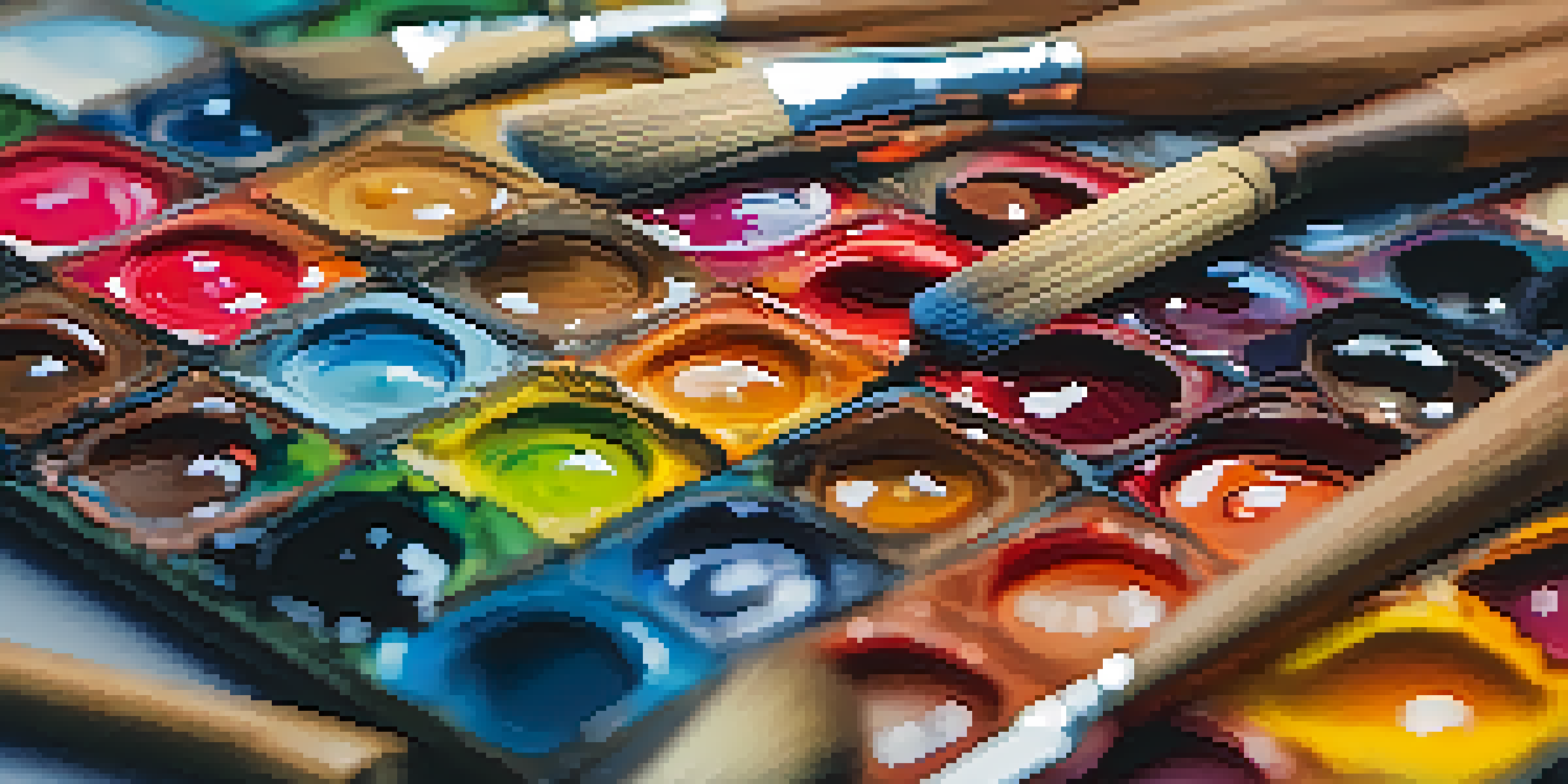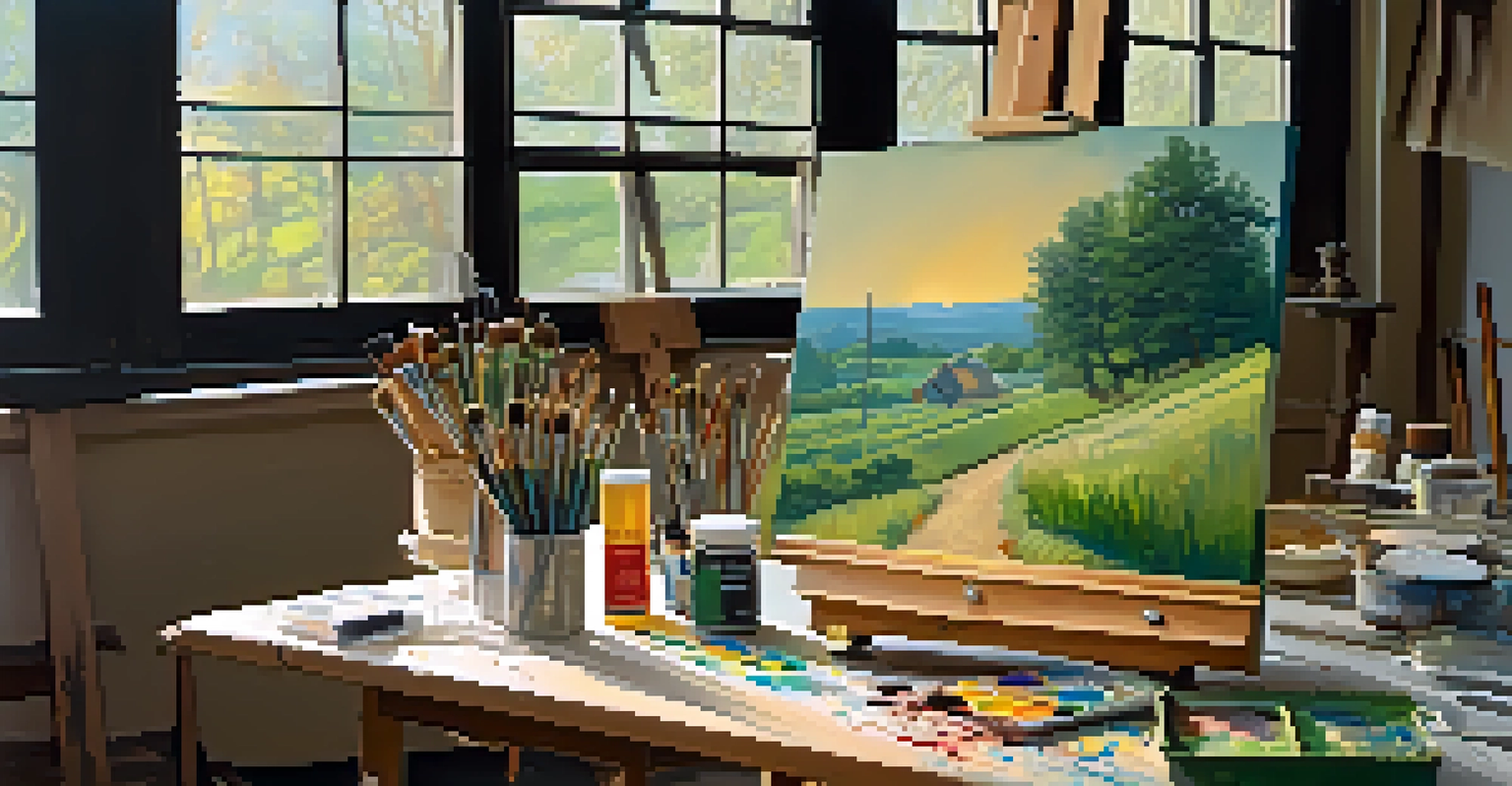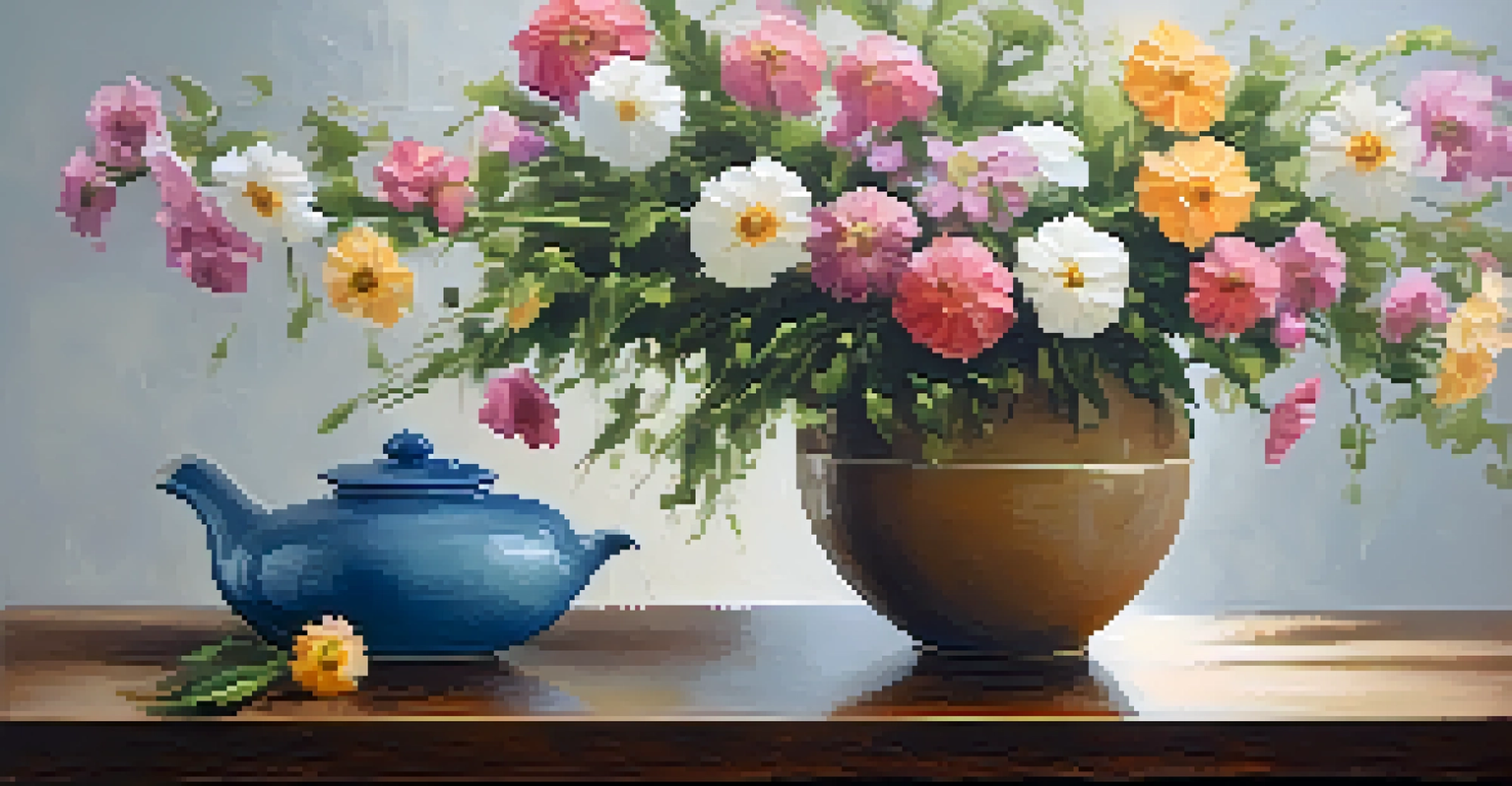Oil Painting Techniques: Glazing, Impasto, and Brushwork

Understanding Glazing in Oil Painting
Glazing is a technique that involves applying thin, transparent layers of paint over dried layers. This method allows artists to create depth and luminosity in their work, giving colors a vibrant quality that can’t be achieved with opaque paint. By building layers gradually, you can achieve a rich, complex surface that transforms your painting.
The painter must be a magician, a poet, and a musician, all at once.
One of the most famous examples of glazing is found in the works of the Old Masters, like Rembrandt and Vermeer. They used glazing to create the illusion of light and shadow, enhancing the emotional impact of their subjects. If you’ve ever admired the glow of skin tones in a portrait, you may have witnessed the magic of glazing at work.
Related Resource
To try glazing yourself, start with a basic oil paint and mix it with a glazing medium. This allows the paint to remain workable while drying slowly, giving you time to manipulate the colors. Remember, patience is key; the beauty of glazing comes from the layers you build over time.
Exploring Impasto Technique in Oil Painting
Impasto is a technique where paint is applied thickly to the canvas, creating a textured surface that stands out from the background. This method not only adds dimension but also allows for expressive brushwork that can convey emotion and movement. Think of it as sculpting with paint, where each stroke is a tactile experience.

Vincent van Gogh is perhaps the most famous proponent of impasto, using thick applications of paint to bring his iconic works to life. The swirling strokes in 'Starry Night' are a perfect example of how impasto can create dynamic energy in a painting. When you look closely, you can almost feel the texture and motion he captured.
Master Techniques: Glazing & Impasto
Glazing and impasto are essential oil painting techniques that can create depth and texture, enhancing the emotional impact of artwork.
To experiment with impasto, use a palette knife or a stiff brush to apply your paint directly onto the canvas. Don’t be afraid to layer it on thickly; the more texture, the better! This technique can be particularly effective for landscapes or still lifes, where you want to evoke a sense of realism and depth.
The Importance of Brushwork in Oil Painting
Brushwork refers to the way an artist uses their brush to apply paint, and it plays a significant role in the overall feel of a painting. Variations in brush strokes can evoke different emotions and energies, from smooth and soft to bold and aggressive. Each stroke is like a signature, revealing the artist’s unique style and intent.
Every artist was first an amateur.
For instance, look at the difference between the delicate brushwork of Claude Monet in his impressionist landscapes and the bold strokes of a contemporary abstract artist. Each approach tells a different story, and understanding brushwork can help you find your own voice as an artist. It’s like learning a new language; the more you practice, the more fluent you become.
Related Resource
To enhance your brushwork, try experimenting with different brushes and techniques. Flat brushes can create sharp lines, while round brushes are great for softer edges. Practice varying your pressure and speed to see how it changes the final look of your painting. The key is to explore and find what feels comfortable and expressive for you.
Combining Techniques for Unique Effects
One of the most exciting aspects of oil painting is the ability to combine techniques, such as glazing, impasto, and brushwork, to create unique effects. For example, you might start with a textured impasto background, then layer glazes on top to add depth and luminosity. This interplay can create a stunning visual narrative that draws the viewer in.
Many artists find that blending these techniques opens new avenues for creativity. By layering different styles, you can achieve a richer, more complex painting that showcases your skills and vision. Picture a landscape where thick, textured trees meet soft, glowing skies—this contrast can evoke a sense of harmony and balance.
Brushwork Shapes Artistic Expression
The way artists use brushwork can convey different emotions and styles, making it vital for developing a personal artistic voice.
When combining techniques, it’s essential to consider drying times and how each layer interacts with the others. Experiment with different mediums to facilitate blending and create the desired effects. Over time, you’ll develop a personal style that reflects your artistic journey.
Choosing the Right Materials for Oil Painting
Selecting the right materials is crucial for mastering oil painting techniques. High-quality paints, brushes, and mediums can dramatically affect your results. When starting out, it’s wise to invest in a few good brushes and professional-grade oil paints that offer better pigmentation and consistency.
For glazing, a medium like linseed oil or a specific glazing medium can help achieve transparency while maintaining the paint’s flow. For impasto, consider using a thicker medium like a gel or paste that retains the texture. The right materials not only enhance your techniques but also make the painting process more enjoyable.
Related Resource
Don’t forget about your canvas! Stretched canvases or canvas boards should be primed properly to ensure that the paint adheres well. As you explore various techniques, you may find that certain surfaces work better with your chosen methods. Always keep an open mind and experiment with different materials to discover what suits your style.
Learning from the Masters: Inspiration and Techniques
Studying the works of master painters can provide incredible insights into oil painting techniques. Many artists have left behind a wealth of knowledge through their styles and approaches. Whether it’s the luminous glazes of the Renaissance or the bold impasto of modern art, there’s much to learn from those who came before us.
Visiting galleries or museums can be a great source of inspiration. Observing the brushwork and techniques up close allows you to appreciate the intricacies of each piece. Consider taking a sketchbook with you to jot down observations or even practice small studies of their techniques to deepen your understanding.
Learn from Masters for Inspiration
Studying the works of master painters provides valuable insights and inspiration, helping artists refine their own techniques and styles.
You can also find a wealth of resources online, from video tutorials to blog posts detailing specific techniques. Engaging with a community of artists can also provide feedback and encouragement as you refine your skills. Remember, every artist’s journey is unique; let the masters inspire you while you carve your own path.
Practice Makes Perfect: Tips for Improvement
As with any skill, practice is key in mastering oil painting techniques. Set aside regular time to paint, experiment, and focus on specific methods like glazing, impasto, or brushwork. The more you practice, the more comfortable you will become with each technique, leading to greater confidence in your work.
Consider keeping a painting journal to document your progress and ideas. This can be a place for sketches, color studies, or reflections on what works and what doesn’t. Over time, you’ll be able to track how your skills have developed and identify areas where you’d like to focus more attention.

Lastly, don’t be afraid to make mistakes! Every artist has experienced moments of frustration, but these can lead to valuable lessons. Embrace the process, and remember that each painting is a stepping stone toward improvement and self-expression.